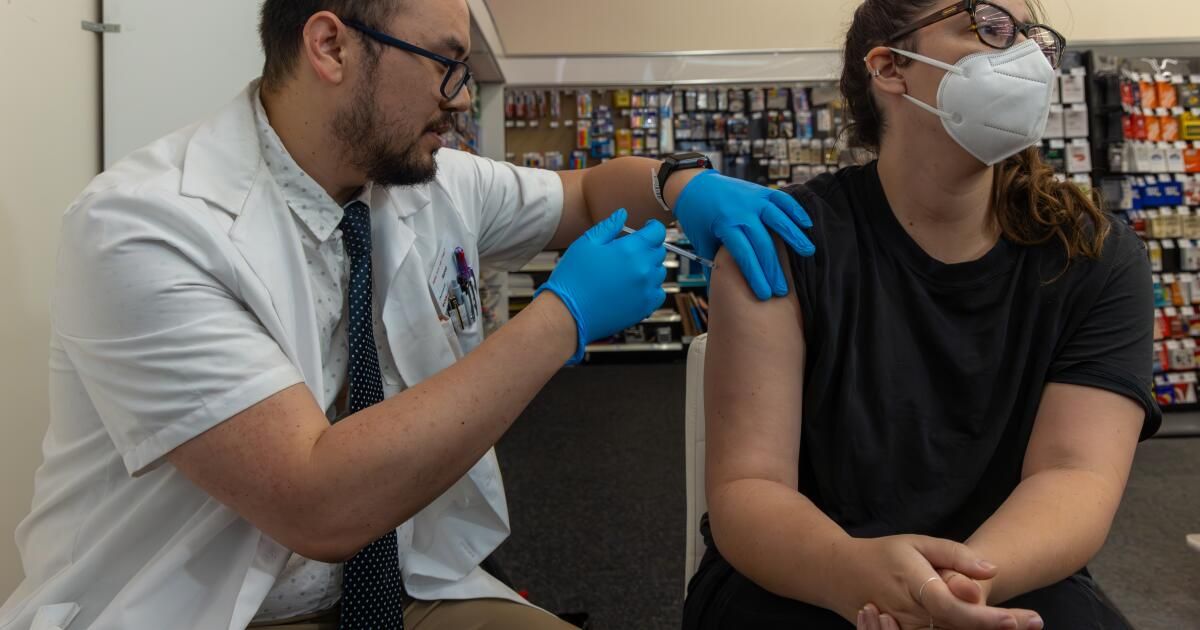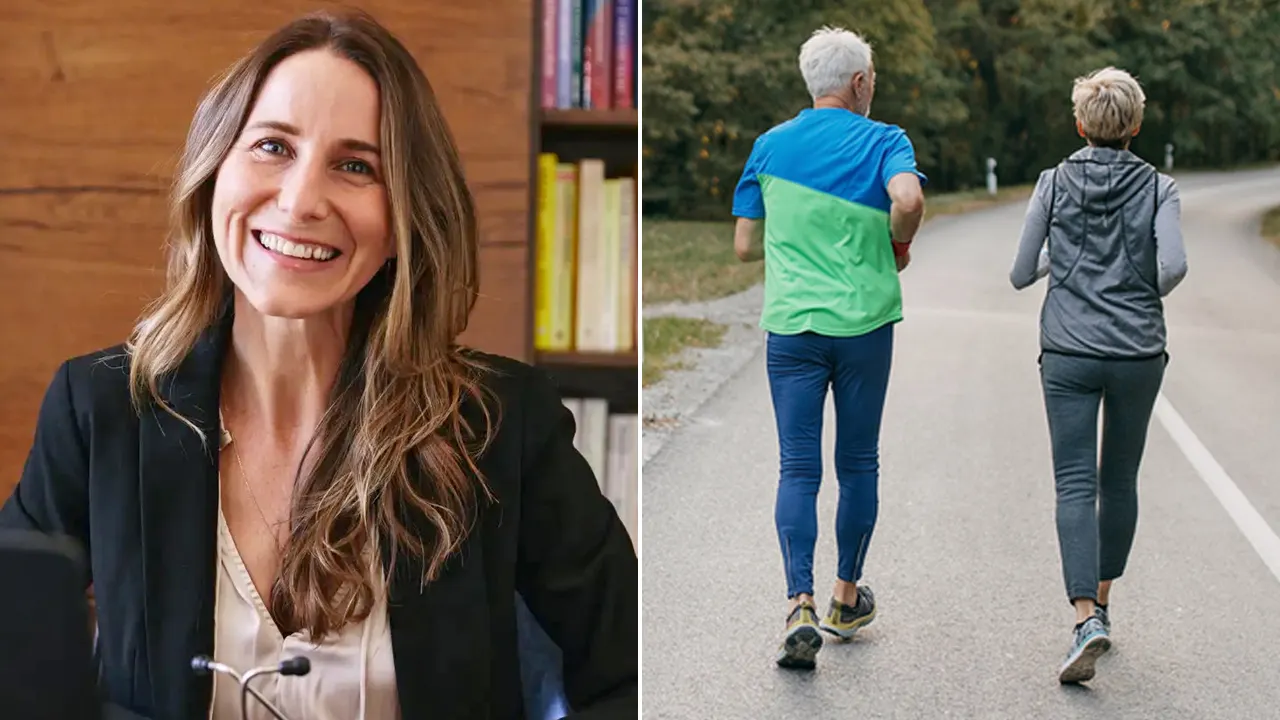The winter COVID and flu season is ramping up in California and across the country, and doctors and other experts say the worst of the respiratory illness season is yet to come.
New data show steep recent increases in the rate of positive coronavirus and flu tests, as well as the number of hospitalized patients testing positive for the viruses. Workplaces are also seeing increased numbers of employees calling in sick due to infections.
National wastewater data suggests this winter could see the highest number of coronavirus infections during a given week since the first Omicron wave began in fall 2021.
“And we’re probably not at the zenith yet,” said Dr. Elizabeth Hudson, regional chief of infectious diseases at Kaiser Permanente in Southern California. “Looking at some of the data that we can extrapolate from wastewater, by the time we get to around January 10, we’re probably going to see, within the U.S., about 2 million cases per day.”
The good news is that the number of people becoming seriously ill remains lower than last year, when hospitals were overwhelmed by a “tripledemic” of COVID, flu and respiratory syncytial virus (RSV).
The peak of the 2021-22 Omicron wave peaked at about 5 million cases per day, according to Hudson.
This winter, by contrast, there are far fewer critically ill COVID-19 patients requiring intensive hospital care, even though there are many sick people.
The flu is also making its presence felt in a big way.
“There is a dramatic increase in influenza,” said Dr. Caroline Goldzweig, medical director of Cedars-Sinai Medical Network.
In terms of demand for outpatient care, “we’re definitely seeing a tremendous amount,” said Dr. Chris Hiromura, associate director of the family medicine residency program at Adventist Health White Memorial Hospital in Boyle Heights.
There is “definitely a big increase in outpatient COVID numbers and just viral illnesses in general,” he said, as well as a more modest increase in respiratory illnesses severe enough to require hospitalization.
Coronavirus and flu test positivity rates have increased over the past month in Los Angeles County. During the week ending Dec. 30, 18% of tests performed at county surveillance laboratories came back positive for the flu, up from 10% the previous month. Regarding the coronavirus, 13.5% tested positive, compared to 9.9% the previous month.
“Our emergency department is very busy, as are our inpatient units,” said Dr. Graham Tse, medical director at MemorialCare Miller Children’s & Women’s Hospital Long Beach. “It’s a mix of all three viruses (influenza, COVID and RSV), but we’re also seeing a lot of other respiratory viruses that are always more prevalent during the winter.”
Nationally, there were 34,798 new coronavirus-positive hospital admissions during the week ending December 30, a 20% increase from the previous week and the highest one-week total in almost a year. Last winter it peaked at 44,542 new hospital admissions during the week ending December 31, 2022.
California recorded 3,516 new positive coronavirus hospital admissions during the week ending Dec. 30, a 7% increase from the previous week, according to the U.S. Centers for Disease Control and Prevention. state last winter was 5,260 new hospital admissions during the last week of 2022.
Since October 1, the CDC has reported an average of about 1,400 COVID-19 deaths per week nationally. During the same period last year, there were about 2,400 weekly deaths from COVID-19.
Last winter’s viral “tripledemic” taxed hospitals, and the burden of RSV weighs particularly heavily on pediatric facilities. Although there are many cases of RSV this winter, Hudson said, “it’s not as bad as last winter.”
Overall, “what’s different this year is that this really seems to be something that is affecting adults much more, particularly those who are over 65,” Hudson said.
Even if a person’s COVID attack is relatively mild, it poses the risk of exacerbating underlying health problems. For example, a person with a lung disease like emphysema who contracts COVID-19 may need hospitalization to receive additional oxygen, Hudson said.
The flu also puts many patients out of commission.
“We’re definitely seeing a pretty big increase in flu… mostly in the outpatient setting,” Hudson said. “But, you know, the flu is pretty miserable. If you’ve never had it, I always describe it as being hit by a Mack truck, because that’s the only way you can really understand how bad you can feel about it.”
The flu has also forced concert cancellations in recent months, hampering performances by Christina Aguilera and the rock band KISS.
One complication Hudson has noticed in recent months is that people can have COVID-19, but rapid tests take longer to return a positive result. Previously, someone could test positive for the coronavirus a day or two after symptoms appeared using a rapid test, Hudson said. Now, positive results may not appear until perhaps the fourth day after symptoms begin.
People who initially test negative for COVID-19 despite having symptoms and do not retest later “might have a false sense of security” that they do not have COVID when in fact they do and are contagious. Hudson said.
The delay in accurate test results is likely because people have built up immunity to COVID-19 over the years, either from vaccination or previous infection, which is lengthening the testing window, according to Hudson.
It’s important for people to take steps to limit their risk of contracting or developing serious complications from COVID-19, flu or other viral illnesses, doctors say. These include getting a new COVID-19 and flu vaccine this winter, something many people have not done yet. For infants, pregnant people, and older adults, the RSV vaccine is also available.
“People who are diligent and get updated vaccines as they come out will be less likely to have severe illness,” Goldzweig said.
It is important to realize that COVID-19, despite being less deadly than the most harrowing phases of the pandemic, is not a simple common cold virus.
“We’re still seeing people getting long COVID, even if they’ve had COVID before, even if they’ve been vaccinated,” Goldzweig said.
Even younger people face “about a 20% increased risk of heart attacks and strokes” within six months of a COVID illness, “which for people in their 30s and 40s is an increase.” Pretty big,” Hudson added. So while some COVID infections may seem like a normal cold, “it can potentially have longer-lasting impacts that we’re just beginning to understand.”
“It’s not about living in fear. It’s just about understanding that this carries more risks than just a run-of-the-mill sore throat,” Hudson said.
The latest wave has also continued to infect a declining number of people who have never had COVID-19 before, including Dr. Eric Topol, director of the Scripps Translational Research Institute in La Jolla.
Topol, who contracted it last month, has been careful in trying to avoid the coronavirus, but became infected after a colleague with whom he shares an office contracted COVID-19. That colleague was equally cautious, so neither wore masks while sharing his office, Topol said. The colleague does not know how he got infected.
“It’s weeding out a lot of new hosts right now,” Topol said.
In an op-ed published in The Times, Topol wrote that the coronavirus, with its continued ability to accumulate mutations, has “proven highly resilient” and has not “transformed to the state of a common cold.”
To truly return to normal will require new oral and inhaled vaccines that can “achieve high levels of mucosal immunity and protection against infection, which would be variant-proof,” Topol wrote. “Improved variant-proof shots with greater protection and durability” would also be useful. He said these efforts are not receiving the urgent priority they need to be completed this year.
“We have to find a way to stop infections and transmission as soon as possible,” Topol said in an interview. “That’s what we’re missing now. This is how we get to normal. This is how we get evidence of variants. And then we can rest and feel really good.”












